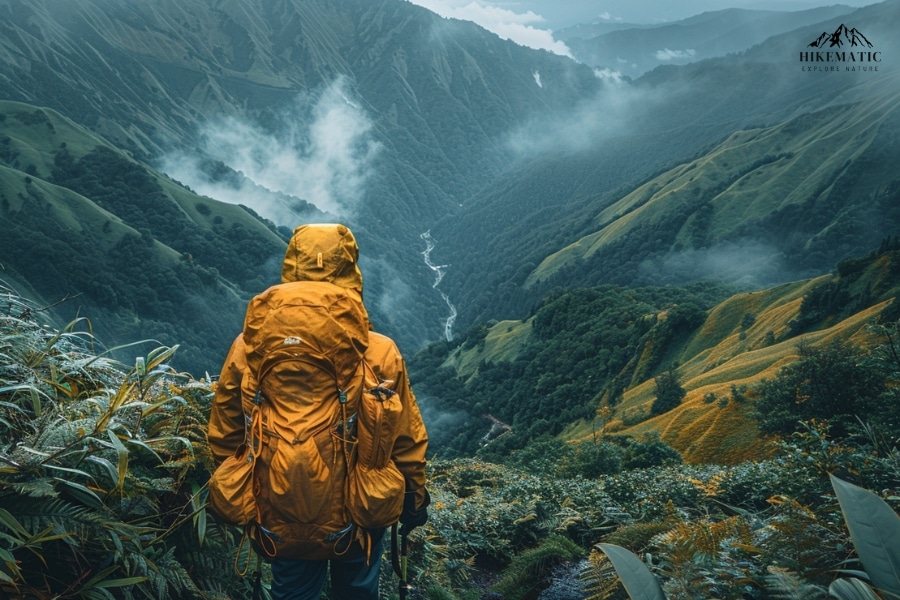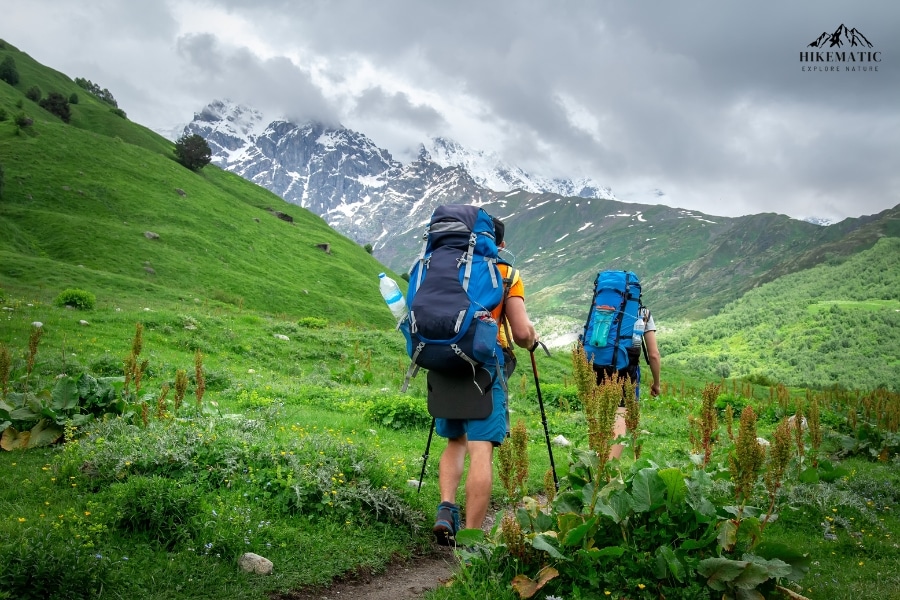Last summer, I found myself standing at the base of the Appalachian Mountains, staring at the seemingly endless path ahead. People had told me that outdoor adventures were fun, but I didn’t know what to expect.
Before I took my first step on the hiking trail, I felt both excited and nervous. Each step brought me closer to untouched nature. I went through dense forests, over rocky ground, and across clear mountain streams.
Trekking is more than just a walk through the woods; it’s a trip into the wild. It’s a chance to get away from the stress of everyday life and push my physical and mental limits. Trekking trails are a unique way to get close to the world’s natural beauty, from the rough landscapes of Colorado to the breathtaking views of Yosemite.
Understanding the basics of trekking
For those who like to travel on the edge, trekking is a wonderful way to get in touch with nature and push your mind and body. Let’s look at what makes trekking so special.
What does trekking mean?
Trekking is usually a trip that lasts more than one day and involves walking on trails in beautiful natural areas. Because it goes farther and changes elevation more than a normal hike, it’s more difficult. Trekkers often have to carry their gear, which makes it a real test of how well they can endure and plan.
Differences Between Trekking and Hiking
Although people sometimes use the terms trekking and hiking interchangeably, there is a distinct difference. When people say “hike,” they usually mean a day-long walk on trails or paths without a heavy pack. On the other hand, trekking lasts longer and includes staying the night somewhere, such as a lodge or a tent.
Popular Trekking Destinations
A lot of places around the world are famous for having excellent trekking tracks. Both the Himalayas and the Andes are known for their beautiful views and difficult trails. In the United States, Yellowstone and the Grand Canyon are great places to go on amazing trail trips that will make you feel like you’ve accomplished something.
The benefits of trekking
Trekking in the great outdoors has many health benefits for both the body and the mind. Let’s talk about how this activity can make our minds and bodies healthier.
Physical Health Benefits
Going trekking is a fantastic way to get in shape. It’s a tough cardio workout that helps build endurance, make muscles stronger, and improve the health of your lungs. Many people think it’s a beneficial way to lose weight because they have to keep moving, which burns calories quickly.
In addition, trekking helps keep the body stable and balanced. It makes the core stronger, which is important for better posture and stability all around. Regular trekking sessions lead to an increase in physical fitness and strength.
Mental Health and Well-being
One of the best things about trekking is that it can help you deal with stress. Studies have shown that being in nature significantly calms people and lowers their stress levels. You can forget about your worries for a while and focus on the present with this type of nature therapy.
Trekking also encourages movement, which triggers the release of endorphins, natural chemicals that enhance your mood. This might make you feel better and give you more ideas. Trekking can also put you in a meditative state because it allows you to connect deeply with your surroundings.
In conclusion, trekking offers a complete way to relieve stress and improve health by combining physical fitness with nature therapy.
Essential Gear and Equipment for Trekking
Having the right gear can make all the difference when you’re getting ready for a hike. This guide will tell you what you need to know to have a wonderful adventure.
Footwear and Clothing
First things first, pick hiking boots that are supportive and have excellent grip. For long trips, comfort is very important. Then, think about what you’ll wear for trekking. Putting on clothes in layers helps you adjust to the changing weather. Materials that wick away moisture keep you dry and comfortable. For extra safety, don’t forget to bring a hat and gloves.
Backpacks and Gear
You need a strong backpack. Find one that fits well and is the right size for you. It can hold your gear, food, and other important things. Make sure the straps on your pack are comfortable and have enough pockets to keep things organized. For multi-day treks, you also need things like a sleeping bag, a tent, and food and cooking supplies.
Navigation Tools
In this day and age of smartphones, traditional tools for navigation are still very important. Bring a GPS, a map, and a compass. These tools will help you stay on track and safe on your hike. Always check your navigation gear one more time before you leave.

Getting Started: Beginner’s Tips
It can be both exciting and challenging to start your trekking trip. A helpful trekking guide for beginners will tell you to start with shorter, easier trails.
Since trekking can be demanding on the body, I strongly suggest getting in shape before you go. Exploring is fun, but staying safe is the most important thing.
Buying excellent gear is very important. Before going on long hikes, break in new hiking boots to avoid pain and damage. When I give trail tips, I always tell people to know the terrain and check the weather ahead of time.
- Make the first trail shorter and easier to understand.
- Before the trek, get in better shape.
- Buy good hiking gear and get used to it.
Understanding basic first aid is crucial. Bring enough water and food with you. It can be very helpful to know how to read a map or use a compass. Joining a trekking group or hiring a guide is a beneficial idea because it keeps you safe and lets you learn from more experienced trekkers.
If you’ve never been trekking before, remember that knowledge and preparation are your best friends. Following these trail tips will help you enjoy your hike while staying safe and up-to-date.
What Role Do Trekking Poles Play in Enhancing the Trekking Experience?
Trekking poles play a vital role in enhancing the trekking experience by providing stability and reducing strain on joints. By using trekking poles, hikers can navigate challenging terrains more effectively. Exploring a trekking poles comparison can help adventurers choose the best options, ensuring comfort and support during their outdoor journeys.
Conclusion
The physical challenge of trekking is great, and the fun of exploring the outdoors is great too. Taking on a trekking adventure can give you a deep sense of accomplishment. I’ve found that it not only makes me more fit, but it also gives me time to relax and think.
Being well-informed and well-prepared can make the difference between a memorable trek and a scary one. Taking care of nature and having the right gear are two things that make hiking fun. Trekking offers a lot of different experiences, from going into the wild for the first time to seeing new places.
It’s not just the journey through nature’s beauty that drives us to put on our boots and hit the trails. It’s also our own personal quest for growth and discovery. With each step we take on a trekking trip, we discover something new about the trail and get a better view of nature’s beauty.
FAQ
What is trekking?
Trekking is an exciting activity that lets you get close to nature by walking through rough terrain. Trekking, on the other hand, can take you through forests, over mountains, and across streams, into some of the world’s most beautiful and untouched places. Trekking is a popular way for many people to see new places, enjoy nature, push their physical and mental limits, or just get away from the busyness of city life.
What is the difference between trekking and hiking?
The main difference between trekking and hiking is how long and how hard it is. Trekking is usually a trip that lasts more than one day and takes place in rougher, more natural terrain. It is harder because it involves longer distances and higher elevations. You also usually carry everything you need in your backpack. Hiking, on the other hand, usually means going for a long walk on trails or paths all day.
What are some popular trekking destinations?
Trekking trails in the Himalayas, the Andes, and well-known national parks like Yellowstone and the Grand Canyon are all popular places to go trekking. People go on treks to these places because they offer beautiful views and make them feel like they’ve accomplished something.
What are the physical health benefits of trekking?
Trekking is beneficial for your health in many ways. It is a strong cardio workout that helps build endurance, make muscles stronger, and improve the health of your lungs. It can help you lose weight, make your balance better, and make your core stronger.
How does trekking improve mental health and well-being?
Trekking can help you feel less stressed because it takes you outside and into nature, inspires you to be more creative, and improves your mood by releasing endorphins. You can also practice mindfulness as you connect with nature and pay attention to the present moment.
What essential gear and equipment are required for trekking?
Hiking boots with good support and grip, layers of clothing that wick away moisture, and a sturdy backpack to carry your gear, food, and other necessities are all things that you need for trekking. For treks that last more than one day, you may also need a sleeping bag, a tent, and cooking gear. Navigation tools, like a map, compass, or GPS, are essential for staying safe and finding your way.
What tips would you give to beginner trekkers?
If you’ve never been trekking before, start with shorter trails that are easy to follow. Trekking can be demanding on your body, so it’s important to get in shape before you go.
- Spend money on good gear, and make sure to break in new hiking boots before you go on a hike.
- Find out about the trail’s terrain, the weather, and any possible dangers.
- It’s important to know how to read and use a compass, give basic first aid, and make sure you have enough food and water with you.
- Joining a trekking group or hiring a guide can also help keep you safe and give you the chance to learn from more experienced trekkers.

